The chalet colony, through which I walked with Anna on that bright morning, was larger and more cheerful than the neighbouring villages. Nobody needed an expulsion order to move in.
‘Ghost Milk: Calling Time on the Grand Project’ – Iain Sinclair
I was alerted to the existence of the river chalets near Farndon by Psychogeographic Review reader, Rob, who wrote about them in his response to a piece I wrote after one of my River Dee walks. The chalets at Farndon are an expression of the ‘plotlander’ movement of the inter-war years whereby city dwellers acquired small plots of land in rural areas and built their own country retreats, largely free of any planning constraints. The movement effectively ended with the onset of the Second World War and the tighter town and country planning regime that was introduced in its aftermath.
So this week, as part of my odyssey to walk the full length of the River Dee, from sea to source, I walked the section between Aldford and Farndon in Cheshire. The most engaging thing about this section of the Dee Way is that the path closely follows the meandering course of the river, rather than making use of paths some way away from the river as in other parts. The highlight, however, was the stretch of river just north of Farndon where numerous plotlander chalets line both banks.
Many of these dwellings are simply static caravans, often with the addition of a terrace and lean-to and, sometimes, modified and extended to the point where the original caravan is all but hidden from view. Others take the form of huts and cabins of various types, while some are little more than glorified sheds. But the point is that they are the owner’s shed; self-built and designed to meet his or her individual vision. This is the kind of humble architecture I take real delight in seeing whenever I pass an allotment: improvised, organic, making use of odd bits and pieces that come to hand. The result is something charming and cosy, but with a whiff of the post-apocalyptic to prevent the overall effect becoming too cloying.
I’ve since read that the actor, Ricky Tomlinson, owns one of these plots near Farndon. The first political demonstration I ever went on, as a student in the 1970s, was to demand the release of Ricky and a number of other jailed pickets. If I’d known which was the right door on which to knock while I was walking, I’m sure that would have earned a cup of coffee with the man himself, even if I had to confess I’d never actually seen Brookside or The Royle Family.
Dwellings of this sort are not, of course, a uniquely British phenomenon. Every small town in the south-western United States, for instance, has its halo of improvised shacks clinging to every road out of town. Driving from Twentynine Palms to Baker a while back, I was particularly struck by the flat-pack wooden dwellings with attendant SUVs in the yard which seemed to go on forever along the desert highway before we reached the true emptiness of the Mojave.
The definitive work on the plotlander movement is Dennis Hardy and Colin Ward’s Arcadia for All. Hardy and Ward chart the growth of the movement in the early part of the twentieth century; a coming together of small farmers willing to rent out or sell small plots of marginal land and urban-dwellers eager to get away from the cramped conditions of the city and to recapture a dimly-remembered or perhaps imagined pre-industrial past. The homes the original plotlanders created were often constructed from discarded materials and, in some cases, from converted former railway carriages.
These were mainly a phenomenon of south-east England and the dwellings were initially weekend and holiday retreats, but some owners eventually opted to occupy them on a permanent basis, subsisting on local casual work or retirement pension. The phenomenon also drew in numbers of ‘artistic types’, particularly those with a wealth of creative drive but a paucity of ready cash.
Farndon’s chalets comprise a mix of those used as holiday homes and others that appear to be permanently occupied. Many of them lack mains services, but there appears to be no shortage of satellite dishes and four-wheel drive vehicles. Also, given their location, several of the chalets have landing-stages and boats.
Local councils, of course, tend to dislike this type of development intensely. Using planning laws and building regulations they have succeeded in closing down many plots over the decades since the Second World War. Other developments, like those at Farndon, mercifully still remain. Many plotlanders have, against the odds, succeeded in making very comfortable homes on increasingly valuable portions of land whilst, at the same time, retaining a spirit of independence within a community of like-minded souls.
Our overwhelming impression was of the way that the plotland self-builders, who started with very little, over the years turned their own labour and ingenuity into capital, with no help at all from local councils, building societies or any other financial institutions.
‘The Hidden History of Housing’ – Colin Ward
References
Dennis Hardy and Colin Ward, Arcadia for All: The Legacy of a Makeshift Landscape(London, Mansell Publishing, 1984)
Colin Ward, ‘The Hidden History of Housing’, History & Policy, 2004, http://www.historyandpolicy.org/papers/policy-paper-25.html#plot
Acknowledgments
With grateful thanks to Rob and the extract from his notebook he so generously provided






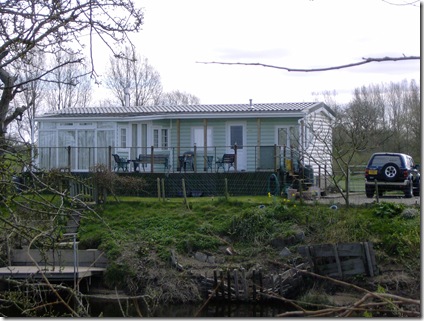
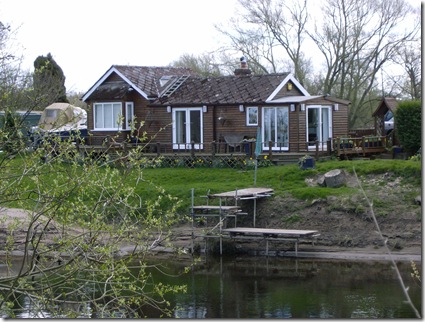
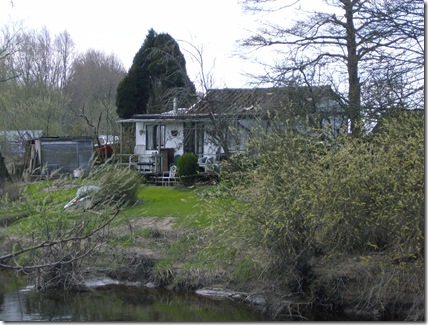




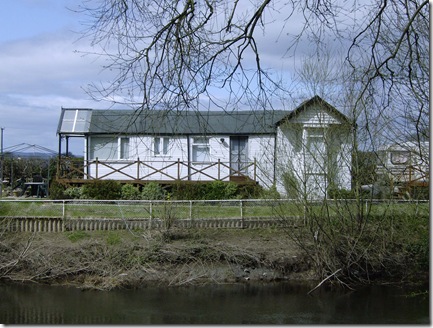


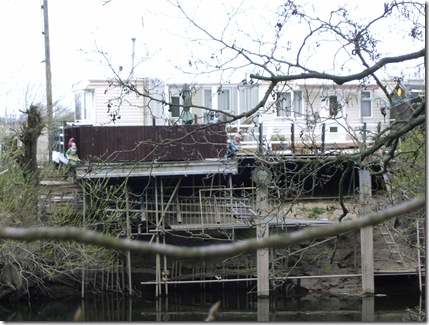
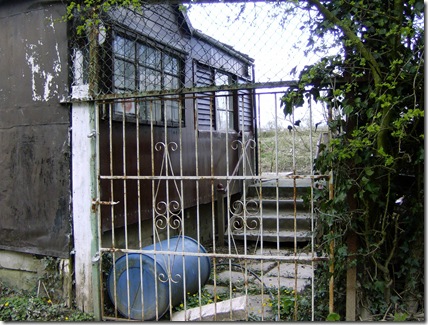
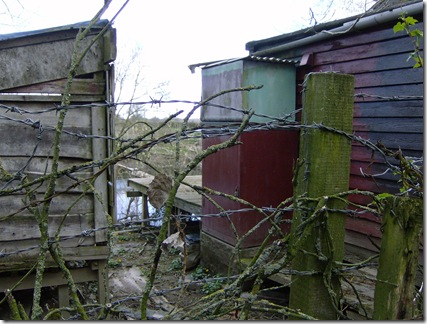
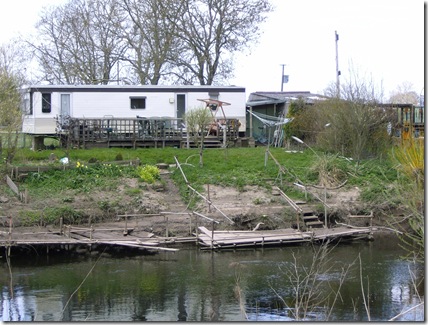
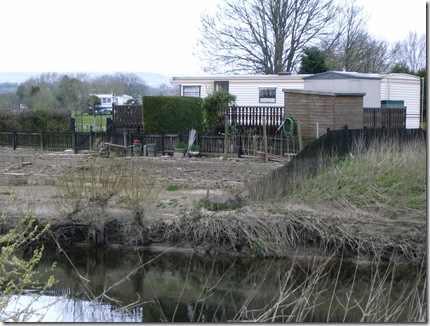
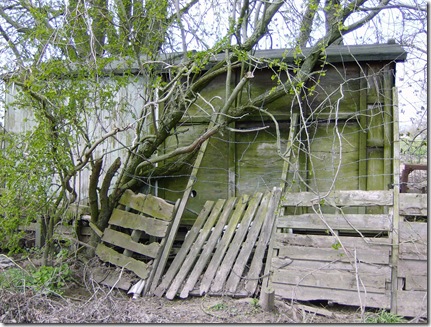

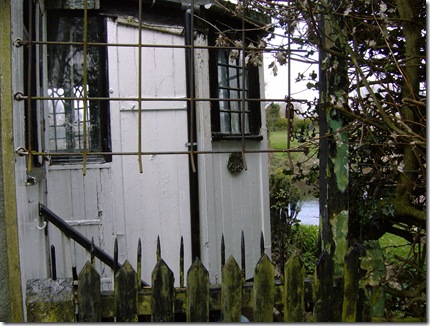
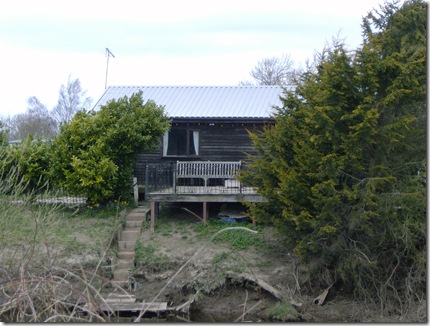
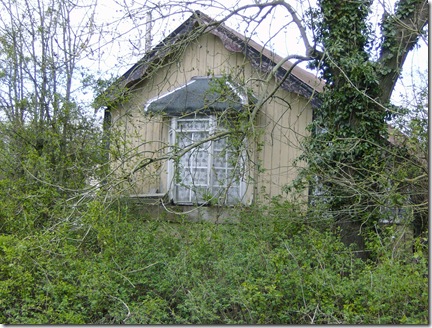
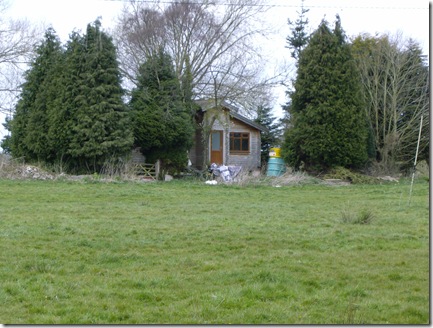
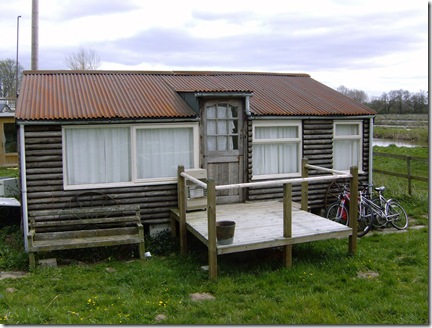
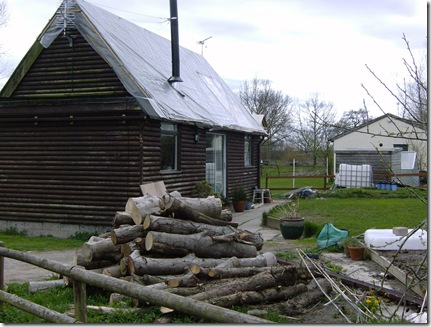
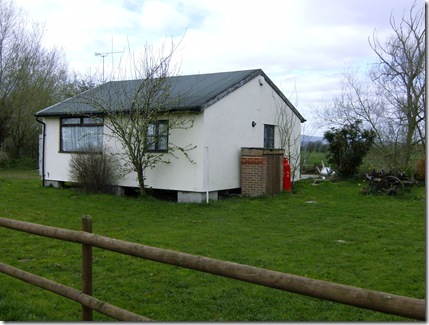
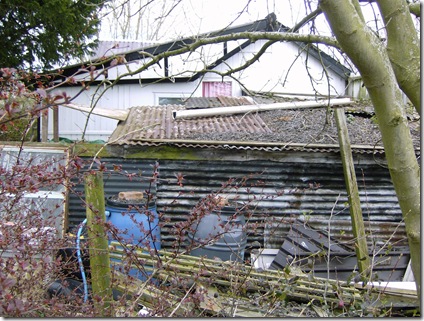
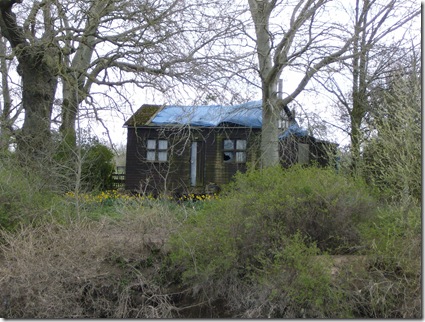
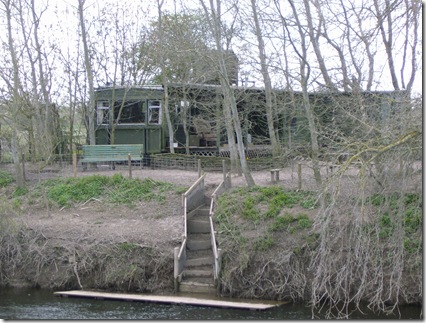
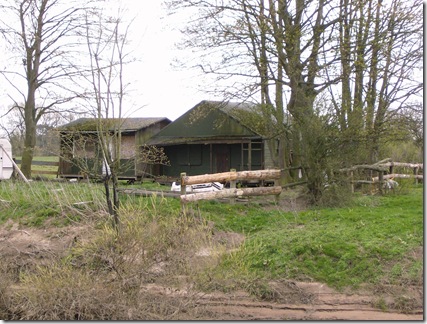
As ever some great pics to accompany a thought provoking piece. I’ll certainly by going out to grab a few snaps! My favourite line is “Driving from Twenty-Nine Palms to Baker…” I remember a sign just outside Baker which says “Salt Lake City 558mls” which says it all about driving in the US desert regions. We should not complain about the A483 again…
On a bike ride near Hebden Bridge I stumbled across a similar linear development to your Farndon Chalets. They use house boats and a series of sheds and lean-tos that grab any possible level footprints on the banks of the Rochdale Canal to make a community that isn’t in-brick and withstood HBs epic floods.
Enjoyed that Bobby and good to see Colin Ward get a mention. A Scottish version might be the Carbeth Hutters http://www.carbethhuts.co.uk/
Have just seen something similar at Snettisham Beach in Norfolk – love them! Went to a talk on Colin Ward a few months ago too and am reading one of his books. Great stuff.
Some interesting comments – thanks guys. It would have been nice to have explored some of the the community aspects of the chalets but, unfortunately, I was only able to observe from the outside.
Hi, I was recently told about your article. I live in one of the Farndon chalet’s, unfortunately you have not included a photo of our’s here. We live in the one nearest to Farndon/Holt bridge on the Cheshire side of the river.
I have, for some time, been trying to accumulate information about the original chalets(not the mobile homes etc) and have managed to get some historic information.
I have also managed to find out some very interesting stories about living/staying by the river.
My aim has been to try and put together a book about this community and wondered if you would be interested in any way.
Best Wishes, Lesley Martin
Hi Lesley. Good to hear from you. I think the story of the chalets is fascinating, though my research was nothing like as comprehensive as yours sounds. I like the sound of your project and would be interested to hear more.
Hi, My project was started a few years ago. I took photo’s of all the original chalets – around 50. The project has been on hold for a while. I have some history on them but have 2 contacts that I need to visit and get more information from. Do you have an email address? Lesley
Hi Lesley. Hopefully you should have an email from me by now, if not try admin@psychogeographicreview.com
Hi Lesley Martin,
Did you ever put your book together? There are now several books about the plotlands out but not easily found. I love too see your collection of photographs
Best Stefan
Hi Stefan
I will forward your message to Lesley.
Kind regards.
Hi – My family owned a shalet on the Welch side of the Dee in 1949 -1952. I have wonderful memories of holidays spent there. Access to the chalet was along a muddy lane lined with damson trees and occasionally we had to abandon our holiday because flooding had made the lane impassable. We used to row up stream to a natural spring in the bank to collect water. I’m trying to identify the chalet from your photos. I have a photo of the chalet which I can send if it is of interest to anyone.
Hi Beryl. Thanks for your comments. I’d be very interested to see the picture of your family’s chalet. Then, assuming it’s still there, I’ll try and take a picture of how it looks now for you the next time I walk along that stretch of the river.
Hello Bobby-I would be delighted to know if the old chalet was still there and would love a photo. I’m not sure how to get my photo to you-I have it on my computer now.
The chalet was situated on the Welsh side of the river with one neighbour -just visible in the photo with a stand of Horse chestnut trees next to that neighbouring chalet. Our property was not far from where the river turns to the right with a small sandy bank we used to swim from.
I wish I could do that walk myself having so many wonderful memories of that particular place. Kind regards Beryl
Good to hear from you again, Beryl. Thanks for the picture, which I’ve now received by email. It may be a week or two before I get down there, but I’m looking forward to trying to track down your family’s old chalet and taking a picture for you of the chalet as it is now. I’ll be in touch!
Pingback: Huts and chalets near Farndon, Cheshire | wrekin
The ‘caravan site’ at Weetwood Cheshire (between Kelsall and Tarvin) was closed by the Council after WW2. Except for one chap who had lived there through the war. He was given planning permission for a bungalow on condition that he knocked down his shack. We bought the bungalow from the next owners in 1972. The shack was still there. But I’m not sure if we took a photo.
More on https://www.facebook.com/groups/hutters.uk/
I have just bought a little (probably) 1930’s chalet on Humberston Fitties near Cleethorpes. This is an original plotland development in North East Lincolnshire of over 300 chalets. Started with tents before WW1 people built their own chalets on the salt-marshes (locally known as Fitties). In the early 1990’s the council put sanitation in and electricity arrived. Due to it being on salt-marsh and right by the beach it wasnt threatened with compulsory purchase like many other plotlands nearer the capitol. But the local council always had a love/hate relationship with it, and still has today.
The march of the static caravan is the biggest threat to the area now. Though it being designated as a Conservation Area in the late 1990’s has given it some protected status. The main clash now seems to be that the council do not want retired owners to occupy their chalets all year round.
My chalet is very old an original and has a lot of charm. Before the Conservation many people re-built their wood chalets with bricks and mortar – so a minority look like suburban bungalows now. Still many more are original and the whole area has a unique feel. Mine is right next to the beach and the views of the old forts guarding the entrance to the Humber just add to its other-worldliness.
Thanks for commenting Sam. I’ve heard of the Humberston Fitties but never been to see them. There’s an interesting piece about them on the Hutters UK blog from 2014 https://hutters.uk/2014/10/01/the-humberston-fitties-magical-but-under-threat/
Hello, my father and his parents lived in one of these chalets at Farndon from 1940-1958. My father used to speak of it very fondly.
Hi, thanks for your comment. It’s a fascinating place with an interesting history. Have you ever visited it?
Pingback: Huts and chalets near Farndon, Cheshire – Hutters.uk – Iain's blog about hutting